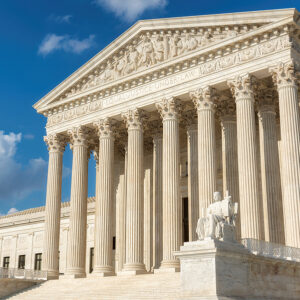The Supreme Court — including the rules that govern its members and the decisions it issues — is not untouchable, nor should it be.
Over the past year, the American people have demonstrated the limits of the Supreme Court’s reach. Millions of voters have enshrined reproductive rights into state constitutions and rejected efforts to insert new limits into state law. And while some state legislators, smug in their gerrymandered districts and empowered by the Supreme Court, have continued to enact new violations of privacy, ordinary people have denied the legitimacy of these actions by continuing to help their friends and family secure care, even in the face of potential prosecution.
That is not to suggest that the harms of Dobbs v. Jackson Women’s Health are not far-reaching and severe. It is a dangerous thing when a nation’s highest court rolls back human and civil rights. Denials of care have brought suffering, both emotional and physical. And because Roe v. Wade stood not only for the right to an abortion but also for the equality of women and girls, by overturning it, the Supreme Court also sent a message that pregnancy is more important than freedom.
The Supreme Court is only one branch of the federal government, co-equal to the executive and legislative branches. Too often, however, the institution is treated as beyond reproach. Take the public debate on ethics occurring over a series of Senate Judiciary Committee hearings where some seem skittish over even the idea of requiring nine individuals whose salaries are paid by taxpayers to adhere to basic transparency standards. It’s preposterous that the Senate staffers preparing briefing materials for these hearings must adhere to firmer rules than justices of the Supreme Court.
In constitutional scholarship, the theory known as judicial supremacy stands for the idea that the Supreme Court is the final word on the U.S. Constitution and that the other branches should bow down to the court’s rulings unless an amendment is ratified or the court overrules prior decisions. This is in contrast to the theory of popular constitutionalism, which is the idea that the people have an inherent say and role to play in defining the rights that govern Americans. Over the past year, it has become clear which approach is most implicitly understood by Americans and that — even if those elected to represent them are unable or unwilling to act — citizens will assert their power in the face of judicial overreach.
Americans’ views on abortion are complex. But Justice Samuel Alito’s opinion was so extreme it did not even acknowledge the need for a woman who is facing sepsis from a miscarriage to have a right to care. And just months before, the court had greenlit the enforcement of laws that encouraged people to snitch on their neighbors suspected of helping people access abortion in order to collect thousands in bounty payments.
This is the type of overreach that the people will not stand for and have not stood for. As the country continues to experience the reality of a post-Roe world, poll numbers showing overwhelming support for reproductive rights continue to grow, and ballot initiatives continue to be filed. People, even those who may oppose abortion, continue to have compassion for their loved ones and help them access care.
There will be setbacks, disagreements and debates over laws and regulations. But the Supreme Court has erred, and the past year has shown that — eventually — the people will correct their misunderstanding of the rights inherent in our Constitution.


